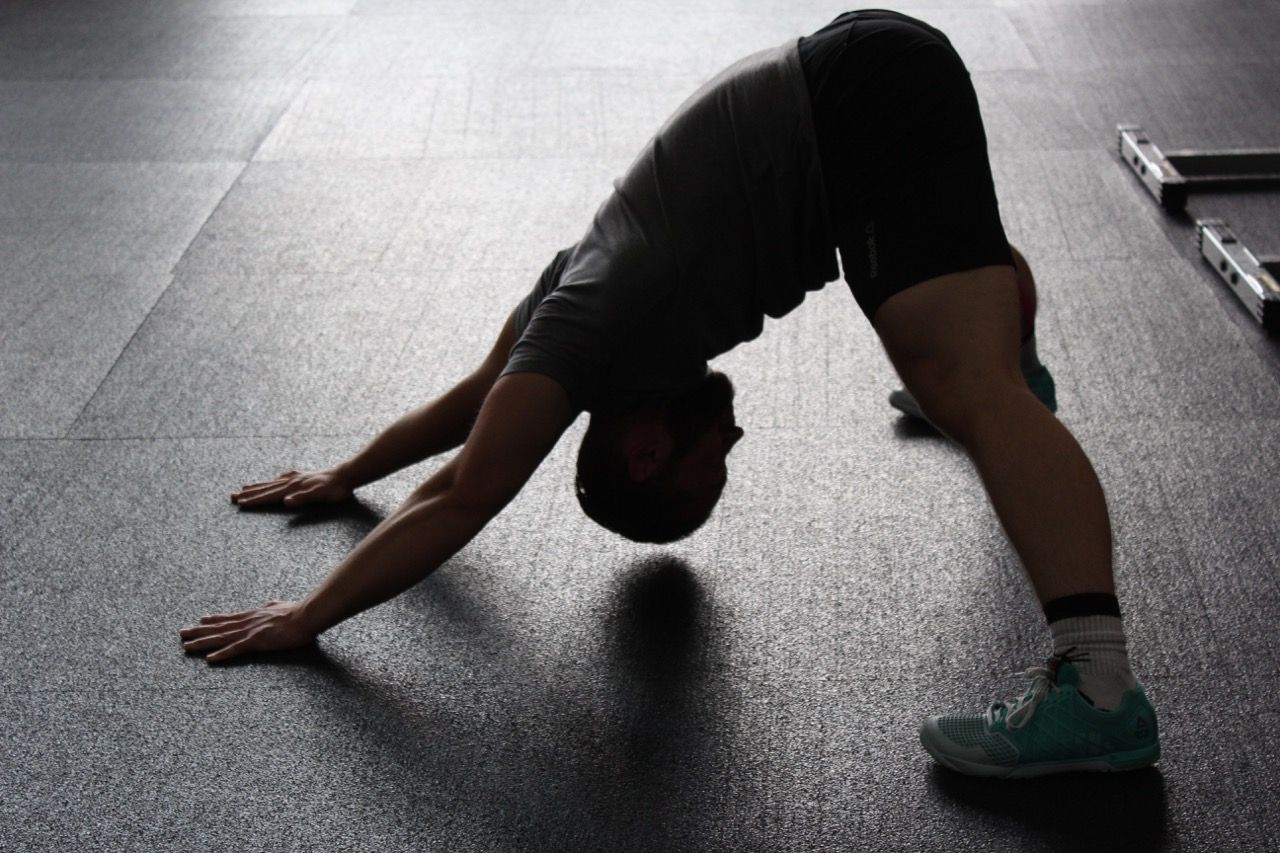A Typical Day for a Hybrid Athlete
Learn how hybrid athletes balance their training, nutrition, and recovery to perform at their best. Discover the benefits to optimizing your performance.

In the world of fitness and athletics, there's a growing trend of individuals breaking away from the constraints of specializing in just one sport or discipline. These modern-day superheroes, known as hybrid athletes, are redefining what it means to be physically fit and versatile by mastering multiple disciplines simultaneously. In this blog post, we'll take you through a day in the life of a hybrid athlete, exploring their unique approach to training, nutrition, and recovery. Discover how these exceptional individuals balance strength, endurance, agility, and flexibility to achieve peak performance across various sports and activities. So, buckle up and get ready to dive into the fascinating world of hybrid athleticism.
Explore some of the sponsors of this blog and discover cool apps, products, or websites that I'm currently using and loving by visiting the links below 👇
Do Hard Things*: Achieve fitness goals with Fit for Life, a minimalist log book for men and women. Track progress and set monthly goals with expert design.
LMNT: Stay Salty! A tasty electrolyte drink mix that is formulated to help anyone with their electrolyte needs and is perfectly suited to folks fasting or following low-carb, whole-food diets
Nurecover: Leaders in cold therapy. A simple effective way to enjoy cold water therapy LITERALLY anywhere from your; House, Patio, Garden, Balcony, Work, Holiday, Apartment.
yourcompany.com: Interested in sponsoring this blog? 📩 → blogSponsor@hybridathletepro.com
The Importance of a Balanced Routine
A balanced routine is crucial for a hybrid athlete as it ensures that all essential components of fitness are addressed, preventing imbalances or weaknesses in any one area. This approach helps to reduce the risk of injury, improve performance, and maintain long-term progress.
When it comes to achieving success as a hybrid athlete, a balanced routine is the cornerstone of their training philosophy. By incorporating diverse elements from various disciplines, these athletes create a well-rounded fitness regimen that targets all aspects of physical performance. Let's delve deeper into why a balanced routine is so crucial for hybrid athletes and the benefits it offers.
Focusing solely on one discipline can lead to muscular imbalances and weaknesses, increasing the risk of injury and hindering overall performance. By engaging in a balanced routine that addresses strength, endurance, agility, and flexibility, hybrid athletes can avoid these pitfalls and ensure that no aspect of their fitness is neglected. This comprehensive approach helps to create a strong foundation for success in multiple sports and activities.
A balanced routine allows hybrid athletes to excel in various disciplines simultaneously. By targeting different energy systems and muscle groups, they can enhance their performance across the board. For example, combining strength training with endurance work enables them to build powerful muscles while also improving their cardiovascular fitness. This multifaceted approach allows them to tackle any physical challenge with confidence and ease.
Another benefit of a balanced routine is that it promotes longevity and adaptability in sports and fitness. Hybrid athletes are better equipped to handle new challenges and changing circumstances, as their diverse skill set allows them to adapt quickly to different environments and demands. This adaptability is not only beneficial in the world of sports but also carries over into everyday life, making them more resilient and capable in various situations.
Having a balanced routine also helps to prevent burnout and boredom. By continually challenging themselves with new exercises and disciplines, hybrid athletes maintain their motivation and enthusiasm for fitness. This variety keeps training sessions fresh and engaging, helping to stave off the monotony that can arise from a single-minded focus on one sport or activity.
By addressing all aspects of fitness and incorporating diverse training elements, they can avoid imbalances, boost performance, promote longevity, and keep their training exciting and enjoyable. Embracing a well-rounded approach to fitness not only leads to success in multiple disciplines but also fosters a sustainable and fulfilling athletic lifestyle.

Morning Routine
The morning sets the tone for the entire day, and hybrid athletes understand the importance of starting their day on the right foot. A well-structured morning routine can have a significant impact on their energy levels, mood, and overall productivity. Let's explore the key components of a typical morning routine for a hybrid athlete and how they contribute to success.
Waking Up Early
Many hybrid athletes choose to wake up early to take advantage of the quiet and peaceful hours before the world comes alive. This early start provides them with ample time to focus on their personal growth, mental well-being, and physical preparation for the day ahead.
Meditation and Mindfulness
Meditation and mindfulness practices are often incorporated into a hybrid athlete's morning routine. By dedicating time to quiet their mind and focus on the present moment, they can cultivate a sense of calm and clarity that carries over into their daily activities. This mental discipline also helps to enhance focus and concentration, essential attributes for achieving peak performance in any sport or discipline.
Journaling and Goal Setting
Journaling is another popular practice among hybrid athletes. By putting pen to paper, they can reflect on their thoughts, emotions, and experiences, promoting self-awareness and personal growth. This process can also be a powerful tool for setting daily goals and intentions, providing a clear roadmap for the day ahead.

Fit for Life | Workout Tracker
Take control of your fitness journey with Fit for Life, the expert-designed minimalist fitness log book for men and women. This comprehensive log book is the perfect companion for your workouts, helping you to track progress, set and achieve monthly goals, and monitor momentum.
Light Stretching and Mobility Exercises
A typical morning routine for a hybrid athlete often includes light stretching and mobility exercises to wake up the body and prepare it for the day's physical demands. Gentle movements such as dynamic stretches, foam rolling, or yoga can help to increase blood flow, enhance flexibility, and promote overall mobility. This practice not only supports athletic performance but also contributes to general well-being and injury prevention.
Nutritious Breakfast
Fueling the body with a nutritious breakfast is a crucial component of a hybrid athlete's morning routine. A well-balanced meal, rich in protein, healthy fats, and complex carbohydrates, provides the energy needed for their upcoming training sessions and daily activities. Examples of healthy breakfast options include whole-grain toast with avocado and eggs, Greek yogurt with berries and nuts, or a protein-packed smoothie with leafy greens, fruit, and nut butter.

Warm-Up and Mobility Drills
As hybrid athletes transition into their daily training sessions, warm-up and mobility drills take center stage. These exercises play a crucial role in preparing the body for the physical demands of a diverse training regimen, ensuring that the athlete can perform at their best while minimizing the risk of injury.
Dynamic Warm-Up Exercises
Hybrid athletes often begin their warm-up with dynamic exercises that involve continuous movement. These exercises help to increase heart rate, raise body temperature, and activate key muscle groups. Examples of dynamic warm-up exercises include high knees, leg swings, arm circles, and jumping jacks. By incorporating a variety of movements, the athlete effectively prepares their body for the different challenges they will face in their training session.
Mobility Drills
Following the dynamic warm-up, hybrid athletes shift their focus to mobility drills. These exercises aim to enhance joint mobility, improve range of motion, and address any muscle imbalances or tightness that could hinder performance or lead to injury. Common mobility drills include hip openers, ankle rolls, and thoracic spine rotations. The focus here is on controlled, fluid movements that target specific joints and muscle groups, promoting optimal functionality and movement quality.
Activation Exercises
To further prepare for their training session, hybrid athletes may also include activation exercises in their warm-up routine. These exercises are designed to "switch on" specific muscles, ensuring that they are firing correctly and efficiently during the workout. For example, a hybrid athlete might perform glute bridges or clamshells to activate their glute muscles before engaging in lower-body exercises such as squats or lunges. Activation exercises help to build a strong mind-muscle connection, which is essential for effective and efficient movement patterns.
By dedicating time and attention to warm-up and mobility drills, hybrid athletes can prime their bodies for the diverse and intense challenges that lie ahead in their training sessions. This comprehensive approach to preparation not only supports peak performance but also contributes to overall injury prevention and long-term athletic success. With their bodies adequately warmed up and mobilized, hybrid athletes are ready to tackle the next phase of their training, be it strength and conditioning, skill work, or sport-specific drills.

Strength and Conditioning Training
As hybrid athletes progress through their daily training regimen, strength and conditioning training becomes a primary focus. This component of their routine is vital for building muscular power, increasing endurance, and enhancing overall athletic performance. By incorporating a variety of exercises and training modalities, hybrid athletes can develop well-rounded strength and conditioning that translates to success across multiple disciplines.
Compound Exercises
A fundamental aspect of strength and conditioning training for hybrid athletes is the inclusion of compound exercises. These multi-joint movements engage multiple muscle groups simultaneously, providing a highly efficient and effective way to develop strength and power. Examples of compound exercises include squats, deadlifts, bench presses, and pull-ups. By consistently incorporating these exercises into their routine, hybrid athletes can build a strong foundation for athletic performance and functional fitness.
Plyometric Training
Plyometric training is another essential component of a hybrid athlete's strength and conditioning program. These explosive, high-intensity exercises focus on developing power, speed, and agility, which are critical attributes for success in various sports and activities. Common plyometric exercises include box jumps, plyo push-ups, and bounding drills. By incorporating plyometrics into their training, hybrid athletes can develop the explosive power needed for peak performance.
Functional Training
Functional training plays a significant role in a hybrid athlete's strength and conditioning routine. These exercises focus on training the body for the movements and demands it encounters in everyday life and sports, enhancing overall athleticism and reducing the risk of injury. Examples of functional training exercises include kettlebell swings, medicine ball slams, and single-leg deadlifts. By prioritizing functional fitness, hybrid athletes can ensure their strength and conditioning efforts translate directly to improved performance in their chosen disciplines.
Cardiovascular Training
To complement their strength and power development, hybrid athletes also include cardiovascular training in their routine. This aspect of their program focuses on building endurance, improving heart health, and increasing work capacity. Cardiovascular training can take many forms, such as running, swimming, cycling, or high-intensity interval training (HIIT) workouts. By incorporating a mix of cardiovascular exercises, hybrid athletes can maintain a well-rounded approach to their fitness, excelling in both endurance and strength-based activities.
With a comprehensive approach to strength and conditioning training, hybrid athletes can develop the diverse skill set and physical attributes needed to excel in multiple sports and disciplines. This versatility not only sets them apart from more specialized athletes but also contributes to their overall success and enjoyment in the world of fitness and athletics. As they continue to push their boundaries and challenge themselves through varied strength and conditioning exercises, hybrid athletes can unlock their full athletic potential and achieve new heights of performance.
Skill Training and Sports Specific Drills
Endurance
In addition to strength and conditioning, endurance training is a crucial component of a hybrid athlete's training regimen. This type of training focuses on enhancing the body's ability to sustain prolonged physical effort and recover more efficiently, enabling athletes to excel in endurance-based sports and activities. By incorporating various endurance training methods, hybrid athletes can build a well-rounded fitness foundation that supports success across multiple disciplines.
Aerobic Training
Aerobic training is the cornerstone of endurance training for hybrid athletes. This type of exercise focuses on improving cardiovascular endurance by engaging the body's aerobic energy system, which relies on oxygen to produce energy. Common forms of aerobic training include running, cycling, swimming, and rowing. By incorporating these activities into their routine, hybrid athletes can improve their cardiovascular fitness, increase their stamina, and enhance their ability to perform at their best during extended periods of physical activity.
Tempo Workouts
Tempo workouts are another effective method for building endurance in hybrid athletes. These workouts involve maintaining a challenging but sustainable pace for a specified duration or distance, teaching the body to efficiently process lactate and delay the onset of fatigue. Examples of tempo workouts include running at a comfortably hard pace for 20-30 minutes or cycling at a moderate intensity for an extended period. By regularly including tempo workouts in their training, hybrid athletes can boost their endurance and improve their performance in longer events.
Interval Training
Interval training is a versatile endurance training tool that can benefit hybrid athletes looking to improve both their aerobic and anaerobic fitness. This type of workout involves alternating between periods of high-intensity exercise and recovery, challenging the body's energy systems and promoting cardiovascular adaptations. Examples of interval training include high-intensity interval training (HIIT) sessions, hill repeats, or swimming sprints with rest intervals. By incorporating interval training into their routine, hybrid athletes can enhance their endurance, speed, and overall performance in various sports and activities.
Long, Slow Distance (LSD) Training
Long, slow distance (LSD) training is another endurance training method that can benefit hybrid athletes. This type of workout involves performing an activity such as running, cycling, or swimming at a low to moderate intensity for an extended period. LSD training helps to build the body's aerobic base, improve its fat-burning capabilities, and enhance overall endurance. By regularly including LSD workouts in their training, hybrid athletes can develop the stamina and resilience needed to excel in endurance-based events and activities.
Incorporating endurance training into their daily routine allows hybrid athletes to develop the physical and mental fortitude necessary to thrive in demanding, endurance-based disciplines. By embracing a multifaceted approach to endurance training that includes aerobic workouts, tempo sessions, interval training, and LSD training, hybrid athletes can cultivate a robust and versatile endurance foundation that supports success across a wide range of sports and activities. This focus on endurance, coupled with strength and conditioning training, enables hybrid athletes to achieve peak performance and enjoy a dynamic, exciting athletic journey.

Power and Agility
As hybrid athletes continue to develop their diverse fitness foundation, power and agility training becomes an essential aspect of their regimen. This type of training emphasizes the development of quick, explosive movements and the ability to change direction rapidly. By incorporating power and agility exercises into their routine, hybrid athletes can improve their performance in various sports and activities, further enhancing their overall athleticism.
Plyometrics for Power Development
As previously mentioned, plyometrics play a significant role in the development of power for hybrid athletes. These high-impact, explosive exercises focus on training the muscles to generate maximum force in the shortest amount of time. By incorporating plyometric exercises such as depth jumps, hurdle hops, and broad jumps into their training, hybrid athletes can build power, speed, and explosiveness that translates to improved athletic performance across multiple disciplines.
Agility Drills
Agility drills are an integral part of a hybrid athlete's power and agility training. These exercises focus on enhancing an athlete's ability to change direction, maintain balance, and react quickly to various stimuli. Common agility drills include ladder drills, cone drills, and shuttle runs. By practicing these exercises, hybrid athletes can improve their coordination, footwork, and body control, enabling them to navigate complex movement patterns and rapidly adjust to changing circumstances in their chosen sports and activities.
Olympic Weightlifting
Olympic weightlifting is another effective method for developing power and explosiveness in hybrid athletes. The two primary lifts in Olympic weightlifting – the snatch and the clean and jerk – require athletes to generate significant force in a short amount of time, making them ideal exercises for building power. By incorporating these lifts into their training program, hybrid athletes can develop powerful hip and leg drive, core strength, and upper body power, all of which contribute to overall athleticism and performance.
Sport-Specific Power and Agility Training
In addition to general power and agility exercises, hybrid athletes may also benefit from incorporating sport-specific drills into their training. These exercises can help athletes fine-tune their skills and movement patterns for their chosen sports, enhancing their ability to perform at a high level in various disciplines. For example, a hybrid athlete who participates in basketball might include basketball-specific agility drills, while a soccer player might focus on soccer-specific power exercises. By tailoring their power and agility training to their specific athletic pursuits, hybrid athletes can maximize their performance potential and achieve greater success in their chosen disciplines.
Power and agility training is a vital component of a hybrid athlete's well-rounded fitness regimen. By focusing on explosive movements, quick directional changes, and sport-specific skills, hybrid athletes can enhance their overall athleticism and excel in a wide range of sports and activities. This dynamic approach to training, combined with the other components of their routine – such as strength and conditioning, endurance training, and mobility work – allows hybrid athletes to unlock their full athletic potential and enjoy a rich, diverse athletic experience.

Flexibility and Mobility
Flexibility and mobility training is another essential component of a hybrid athlete's daily routine. This type of training focuses on enhancing joint range of motion, reducing muscle tightness, and promoting overall movement quality. By incorporating flexibility and mobility exercises into their regimen, hybrid athletes can improve their performance in various sports and activities while minimizing the risk of injury.
Static Stretching
Static stretching is a common method used by hybrid athletes to improve their flexibility. These stretches involve holding a specific position for an extended period, typically between 15 and 60 seconds, to lengthen and relax the targeted muscle group. Examples of static stretches include hamstring stretches, quadriceps stretches, and calf stretches. By incorporating static stretching into their post-workout routine, hybrid athletes can alleviate muscle tightness, improve flexibility, and aid in recovery.
Dynamic Stretching
Dynamic stretching is another effective method for enhancing flexibility and mobility in hybrid athletes. These stretches involve actively moving a joint through its full range of motion, helping to increase muscle temperature and joint mobility. Examples of dynamic stretches include leg swings, arm circles, and hip circles. By including dynamic stretching in their warm-up routine, hybrid athletes can prime their bodies for the demands of their training session and promote overall movement quality.
Foam Rolling and Self-Myofascial Release
Foam rolling and self-myofascial release (SMR) techniques are beneficial tools for hybrid athletes looking to improve their flexibility and mobility. These methods involve applying pressure to specific areas of the body, such as trigger points or tight muscles, using a foam roller or other tools like massage balls or sticks. By regularly incorporating foam rolling and SMR techniques into their routine, hybrid athletes can release muscle tension, improve blood flow, and increase their range of motion.
Yoga and Pilates
Yoga and Pilates are popular practices among hybrid athletes seeking to enhance their flexibility and mobility. Both disciplines emphasize controlled, mindful movements that promote body awareness, balance, and flexibility. By participating in yoga or Pilates classes, hybrid athletes can develop a greater understanding of their body's limitations and capabilities, ultimately improving their overall movement quality and athletic performance.
Incorporating Flexibility and Mobility Training
To maximize the benefits of flexibility and mobility training, hybrid athletes should incorporate these exercises into their daily routine. This may involve dedicating specific sessions to flexibility and mobility work or integrating these exercises into their warm-up and cooldown routines. By consistently prioritizing flexibility and mobility training, hybrid athletes can improve their performance, reduce the risk of injury, and enjoy a more fulfilling athletic experience.
Focusing on joint range of motion, muscle flexibility, and overall movement quality, hybrid athletes can excel in a wide range of sports and activities while minimizing the risk of injury. This comprehensive approach to training, combined with the other components of their routine – such as strength and conditioning, endurance training, power and agility training – allows hybrid athletes to unlock their full athletic potential and enjoy a dynamic, diverse athletic journey.
Nutrition for Hybrid Athletes
Pre-Workout
A crucial aspect of a hybrid athlete's daily routine is pre-workout nutrition. Proper fueling before training ensures that athletes have the energy and nutrients necessary to perform at their best, avoid fatigue, and recover effectively. By carefully considering their pre-workout nutritional choices, hybrid athletes can optimize their performance in various sports and activities.
Carbohydrates are the body's primary source of energy during exercise, making them an essential component of pre-workout nutrition for hybrid athletes. Consuming carbohydrates before training ensures that athletes have sufficient glycogen stores in their muscles, which provides the fuel needed for high-intensity and endurance activities. Examples of carbohydrate-rich pre-workout foods include whole-grain bread, pasta, rice, fruits, and starchy vegetables.
Including protein in a pre-workout meal can help hybrid athletes support muscle growth and recovery. Consuming protein before training provides the body with essential amino acids, which play a crucial role in muscle protein synthesis and repair. Examples of protein-rich pre-workout foods include lean meats, poultry, fish, eggs, dairy products, and plant-based protein sources like beans, lentils, or tofu.
Although fats are not the body's primary source of energy during exercise, they can be an important part of a pre-workout meal for hybrid athletes. Consuming healthy fats before training can help provide a sustained source of energy, particularly during longer, lower-intensity activities. Examples of healthy fats to include in a pre-workout meal are avocado, nuts, seeds, and olive oil.
The timing of a pre-workout meal is essential for optimizing performance and preventing gastrointestinal discomfort. Hybrid athletes should aim to consume their pre-workout meal 2-3 hours before training, allowing ample time for digestion. For those who prefer a smaller snack closer to their workout, a light, easily digestible option containing carbohydrates and protein should be consumed 30-60 minutes before training.
This attention to nutrition, combined with the other components of their daily routine – such as strength and conditioning, endurance training, power and agility training, and flexibility and mobility work – allows hybrid athletes to unlock their full athletic potential and enjoy a dynamic, diverse athletic experience.
Post-Workout
Just as pre-workout nutrition is essential for optimal performance, post-workout nutrition plays a crucial role in recovery and progress for hybrid athletes. Consuming the right nutrients after training can help replenish energy stores, repair muscle tissue, and promote growth, ultimately supporting long-term athletic development.
Replenishing glycogen stores after training is critical for hybrid athletes, as it aids in the recovery process and prepares the body for subsequent workouts. Consuming carbohydrates post-workout helps to restore glycogen levels, providing the necessary fuel for future training sessions. Examples of carbohydrate-rich post-workout foods include whole-grain bread, pasta, rice, fruits, and starchy vegetables.
Protein is another key component of post-workout nutrition, as it provides the amino acids needed for muscle repair and growth. Consuming protein after training helps to stimulate muscle protein synthesis and support the recovery process. Examples of protein-rich post-workout foods include lean meats, poultry, fish, eggs, dairy products, and plant-based protein sources like beans, lentils, or tofu.
While fats are not the primary focus of post-workout nutrition, they can still play a role in the recovery process. Consuming healthy fats after training can help support hormone production and reduce inflammation, promoting overall recovery and well-being. Examples of healthy fats to include in a post-workout meal are avocado, nuts, seeds, and olive oil.
The timing of post-workout nutrition is important for maximizing recovery and muscle growth. Hybrid athletes should aim to consume a meal containing both carbohydrates and protein within 30-60 minutes of completing their training session. This timeframe, often referred to as the "anabolic window," is when the body is most receptive to nutrients and can optimally utilize them for recovery and growth.

Hydration
Hydration is a crucial element of a hybrid athlete's daily routine, as it impacts athletic performance, recovery, and overall well-being. Maintaining proper hydration levels throughout the day and during training can help athletes perform at their best, reduce the risk of injury, and support recovery.
Effects of Dehydration
Dehydration can have negative consequences on a hybrid athlete's performance and health. Even mild dehydration can lead to decreased strength, endurance, and cognitive function. Furthermore, inadequate hydration can result in muscle cramps, dizziness, and increased risk of heat-related illnesses, such as heat stroke or heat exhaustion.
Daily Hydration Guidelines
To maintain optimal hydration levels, hybrid athletes should consume fluids consistently throughout the day. A general guideline is to drink at least half of their body weight in ounces of water per day. For example, a 180-pound athlete should aim to drink at least 90 ounces of water daily. It's important to note that individual hydration needs can vary based on factors such as climate, activity level, and sweat rate.
Hydration Before Exercise
As previously mentioned, proper pre-workout hydration is essential for peak performance. Athletes should consume 16-20 ounces of fluid approximately 2-3 hours before exercise and an additional 8-10 ounces 20-30 minutes prior to their workout. This can help ensure adequate hydration levels throughout the training session and reduce the risk of performance declines due to dehydration.
Hydration During Exercise
Hydration during exercise is also critical, particularly for longer or more intense training sessions. Hybrid athletes should aim to drink 7-10 ounces of fluid every 10-20 minutes during their workout. For exercise lasting longer than an hour, or in hot and humid conditions, an electrolyte-rich sports drink may be beneficial to replace lost sodium, potassium, and other essential electrolytes.
Hydration After Exercise
Post-workout hydration is important for replenishing fluids lost through sweat and supporting overall recovery. As mentioned earlier, hybrid athletes should consume 16-24 ounces of fluid for every pound of body weight lost during exercise. In addition to water, electrolyte-rich sports drinks or natural sources of electrolytes like coconut water can be effective for rehydration.

Recovery and Sleep
Recovery and sleep are essential aspects of a hybrid athlete's daily routine, as they play a significant role in athletic performance, injury prevention, and overall well-being. By prioritizing recovery strategies and consistently getting quality sleep, hybrid athletes can support their progress in various sports and activities, ensuring they reach their full potential.
Active Recovery
Active recovery involves low-intensity exercises and movements that help promote blood flow, alleviate muscle soreness, and aid in the overall recovery process. Examples of active recovery activities include light stretching, yoga, walking, swimming, or foam rolling. By incorporating active recovery sessions into their routine, hybrid athletes can enhance their body's ability to repair and rebuild, ultimately supporting long-term performance and development. We talk more about this below 👇.
Rest days are also an important part of a hybrid athlete's routine, as they allow the body to fully recover and repair from the demands of training. Scheduling regular rest days can help prevent overtraining, reduce the risk of injury, and support overall well-being. Hybrid athletes should aim to include at least one rest day per week in their training schedule, allowing their body to recuperate and prepare for future training sessions.
Sleep
Sleep is a critical component of recovery, as it is during sleep that the body undergoes many of its essential repair and growth processes. A consistent, quality sleep routine can significantly impact a hybrid athlete's performance, cognitive function, and overall well-being. Athletes should aim for 7-9 hours of sleep per night, creating a sleep-conducive environment and establishing a regular bedtime routine to ensure optimal rest.
Nutrition and Hydration
As previously discussed, proper nutrition and hydration are crucial for supporting recovery in hybrid athletes. Consuming a balanced diet rich in carbohydrates, protein, and healthy fats, along with staying adequately hydrated, can aid in muscle repair, reduce inflammation, and promote overall recovery.
Stress Management
Managing stress is another important aspect of recovery for hybrid athletes. High levels of stress can impair the body's ability to recover, negatively impacting performance and well-being. Athletes can incorporate stress management techniques such as mindfulness, meditation, deep breathing exercises, or engaging in hobbies and activities they enjoy to help reduce stress levels and support overall recovery.
Active Recovery
Active recovery is a key component of a hybrid athlete's overall training and recovery routine, as it can provide numerous benefits to both performance and well-being. By incorporating active recovery sessions into their schedule, hybrid athletes can enhance their body's ability to repair and rebuild, ultimately supporting long-term athletic development.
Benefits of Active Recovery
- Improved Blood Flow: Engaging in low-intensity activities during active recovery helps promote blood flow to the muscles, which can facilitate the delivery of essential nutrients and oxygen. Improved blood flow can accelerate the healing process and reduce muscle soreness after intense training sessions.
- Reduced Muscle Soreness: Active recovery can help alleviate delayed onset muscle soreness (DOMS), which often occurs after intense or unfamiliar exercise. Low-intensity movements can help flush out lactic acid and other waste products from the muscles, reducing soreness and stiffness.
- Enhanced Flexibility and Mobility: Incorporating stretching, yoga, or other mobility exercises during active recovery sessions can help improve flexibility and range of motion. Enhanced mobility can contribute to better athletic performance and reduced risk of injury.
- Mental Recovery: Active recovery can provide a mental break from intense training sessions, allowing athletes to relax and recharge mentally. This mental recovery can be just as important as physical recovery in supporting long-term performance and well-being.
Examples of Active Recovery Activities
- Light Stretching: Gentle static or dynamic stretching can help maintain or improve flexibility while promoting relaxation and recovery.
- Yoga: Yoga can provide a combination of stretching, strength, and relaxation, making it an ideal active recovery activity for hybrid athletes.
- Walking: A light walk can help promote blood flow and reduce muscle soreness without placing excessive stress on the body.
- Swimming: Swimming is a low-impact activity that can help promote circulation and recovery without stressing the joints.
- Foam Rolling: Foam rolling, or self-myofascial release, can help release muscle tightness and improve tissue quality, supporting recovery and overall mobility.
Sleep Optimization
Sleep optimization is a crucial aspect of a hybrid athlete's daily routine, as it significantly impacts athletic performance, cognitive function, and overall well-being. By prioritizing sleep and implementing strategies to improve sleep quality, hybrid athletes can maximize their recovery and support their progress in various sports and activities.
The Importance of Sleep for Hybrid Athletes
- Physical Recovery: During sleep, the body undergoes essential repair and growth processes, such as muscle repair, hormone production, and tissue regeneration. Quality sleep is critical for facilitating physical recovery after intense training sessions.
- Cognitive Function: Sleep is crucial for maintaining optimal cognitive function, including memory consolidation, learning, and decision-making. Adequate sleep can support mental focus and concentration during training and competition.
- Injury Prevention: Poor sleep can contribute to increased risk of injury due to decreased reaction time, impaired coordination, and reduced cognitive function. Consistent, quality sleep can help reduce the risk of injury and support overall athletic performance.
Sleep Optimization Strategies for Hybrid Athletes
- Establish a Sleep Schedule: Creating a consistent sleep schedule by going to bed and waking up at the same time each day can help regulate the body's internal clock, promoting better sleep quality.
- Create a Sleep-Conducive Environment: Ensuring the sleep environment is dark, quiet, and cool can help improve sleep quality. Consider using blackout curtains, earplugs, or a white noise machine to block out light and noise, and set the room temperature to around 65°F (18°C).
- Limit Exposure to Screens Before Bed: Exposure to blue light from screens can interfere with the body's production of melatonin, a hormone that promotes sleep. Try to limit screen time at least 1-2 hours before bed or use blue light-blocking glasses to minimize exposure.
- Develop a Relaxing Bedtime Routine: Engaging in calming activities before bed, such as reading, taking a warm bath, or practicing relaxation techniques like deep breathing or meditation, can help signal the body that it's time for sleep.
- Monitor Caffeine and Alcohol Intake: Consuming caffeine or alcohol too close to bedtime can negatively impact sleep quality. Try to avoid consuming these substances at least 3-4 hours before bed.
- Exercise Regularly: Regular exercise, preferably earlier in the day, can help improve sleep quality by promoting natural fatigue and relaxation. However, avoid intense exercise too close to bedtime, as it can be stimulating and interfere with sleep.
Where do we go from here?
Welp, as you can see, a typical day for a hybrid athlete involves a well-rounded approach to training, nutrition, and recovery, ensuring they can excel in various sports and activities. By incorporating strength and conditioning, endurance training, power and agility training, and flexibility and mobility work into their daily routine, hybrid athletes can develop a diverse skill set and enjoy a dynamic, fulfilling athletic experience.
Additionally, paying close attention to pre- and post-workout nutrition, hydration, active recovery, and sleep optimization can significantly impact athletic performance, injury prevention, and overall well-being. By prioritizing these essential components, hybrid athletes can maximize their recovery and support their progress across different disciplines.
Ultimately, a typical day for a hybrid athlete is about finding balance and harmony among the various aspects of their training and lifestyle, allowing them to achieve their full athletic potential and enjoy a diverse, dynamic athletic journey.
FAQs
What is a hybrid athlete?
A hybrid athlete is someone who trains in multiple disciplines or sports to achieve optimal physical fitness and athletic performance. They prioritize a well-rounded approach to fitness, excelling in various aspects such as strength, endurance, agility, and flexibility.
Why is a balanced routine important for hybrid athletes?
A balanced routine ensures that all essential components of fitness are addressed, preventing imbalances or weaknesses in any one area. This approach helps to reduce the risk of injury, improve performance, and maintain long-term progress.
What kind of training do hybrid athletes typically engage in?
Hybrid athletes often participate in a combination of strength and conditioning, endurance training, power and agility training, flexibility and mobility training, and sport-specific skill training.
How do hybrid athletes approach nutrition?
Proper nutrition is vital for hybrid athletes to fuel their intense training and support recovery. They focus on well-planned meals, including pre- and post-workout nutrition, and stay hydrated throughout the day.
What role does recovery play in a hybrid athlete's routine?
Adequate recovery, including active recovery and sleep, is essential for a hybrid athlete's success. It ensures that their body can repair and adapt to the demands of their varied training regimen, promoting optimal performance and reducing the risk of injury.
If you're a regular ol' hybrid athlete, you might fall in love with my Tubes channel 👇
https://www.youtube.com/@BarretNobelFitness
It is not only about fitness, it is about life in general. I try to inspire regular people. Check it and subscribe to get notified when new vids come out 🤙
Thanks for reading 🙏!
Don't forget to follow me on our social media for more tips, inspiration and community support! You can find me on Instagram, Facebook, Twitter and TikTok under the handle @BarretNobelFit.
See you in the next post!


